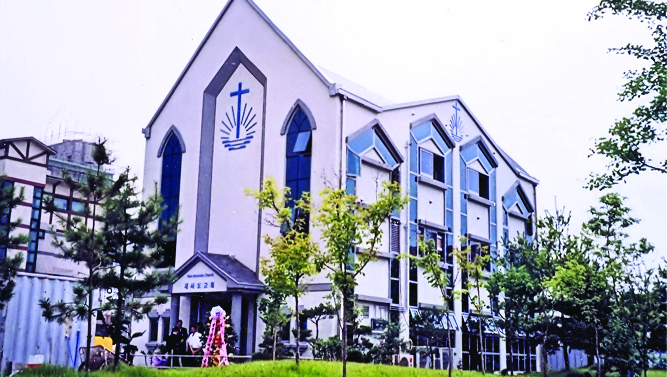In early 1970, Priest Herbert Pache and his wife Joan moved from Canada to Japan to support the beginnings of the church in this country. At the time, this mission area came under the care of District Apostle Michael Kraus of Canada.
At the time, an American naval sailor, Brother Poelzig, was stationed in Korea and Priest Pache asked him to make contact with souls interested in the Christian faith. Soon after, Priest Pache travelled to Korea to explore the potential of establishing congregations there. This was the humble beginning of the work in Korea, and – as is often the case in the church’s history – from nothing, something little began and over time the work continued to grow.
In 1971 the first souls were baptised. District Apostle Kraus and Bishop Wagner came to Korea to conduct the first holy sealings, during a service which took place in an office of a Seoul business. Slowly but steadily the church expanded all over Korea. It was not always easy going but in rural areas especially, where the soil was fertile, many congregations were founded. The members built their churches with unhewn stones from the nearby rivers, a building style which became legendary and characteristic for Korea.
Herb Pache, by now a District Elder, fervently pushed the work in Korea, making regular visits from Japan. He was supported in this work by the brothers of the Canada district, as well as Brothers Oh and Suh in Korea. These two brothers moved and established a business to support their livelihoods wherever a congregation started to grow. It was not an easy lifestyle and it required many sacrifices in their personal lives. Yet, no sacrifice was too heavy; the fire of zeal was burning. Both brothers became the first local District Rectors and Ho Ryu Suh served as Bishop for many years until Bishop Yang, who currently serves the congregations, was ordained into this ministry.
As Korea developed as a nation, industrialisation brought about an exodus from the rural countryside, and within a few short years new cities came into being. That took its toll on congregations and many did not survive, simply because the villages were deserted. Yet, members gathered in their homes and eventually suitable premises could be rented.
Another unique Korean practice which made things difficult was the rentals. Rather than a monthly rental amount, a deposit of capital over a certain time was required. The financial needs were enormous, but with the assistance of the Canada district and the offerings of the Korean members the church eventually became self-supporting and a church could be constructed in Ilsan, on a corner lot in an area where there were once only rice fields. Today, this church stands in the midst of a highly developed urban city.
The prosperity of Korea as a nation also attracted immigrants from amongst the ethnic Korean communities in China. Thus, contacts could be made in other parts of Asia as well.
In January 2009, Korea was integrated into the newly created South East Asia district. In November 2018, Chief Apostle Jean-Luc Schneider entrusted Korea into the care of the Western Pacific district.







